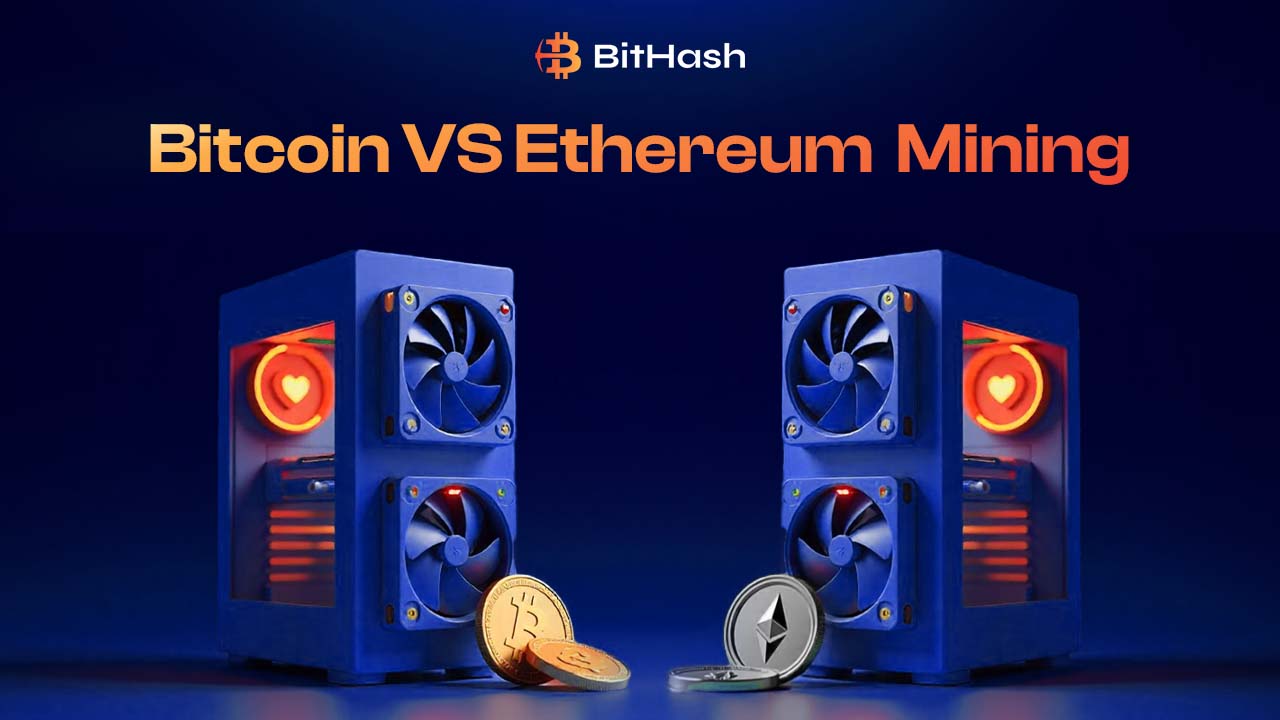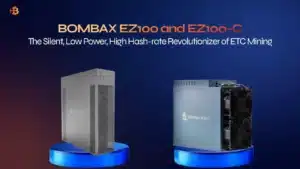Cryptocurrency mining is the backbone of blockchain technology, ensuring secure transaction validation and network stability for digital currencies like Bitcoin and Ethereum. While both use mining to maintain consensus, they differ significantly in terms of algorithms, hardware requirements, transaction fees, rewards, and long-term sustainability.
Bitcoin, often referred to as digital gold, relies on a Proof-of-Work system that demands powerful ASIC hardware and consumes substantial energy. Ethereum initially used a similar method, but under the guidance of Vitalik Buterin, it evolved into a more energy-efficient model. Before transitioning, Ethereum mining allowed users to interact with smart contracts, enabling complex decentralized applications to thrive on its network.
Understanding the core distinctions between these two leading cryptocurrencies can help you determine which approach aligns best with your goals, whether it’s profitability, innovation, or contribution to the future of digital finance.
1. Consensus Mechanism: Proof of Work (PoW) vs. Proof of Stake (PoS)
Bitcoin operates on Proof of Work (PoW), a consensus mechanism where miners solve complex cryptographic puzzles to validate transactions and secure the network. Ethereum used PoW (like Bitcoin) but transitioned to Proof of Stake (PoS) with Ethereum 2.0 (The Merge, completed in September 2022).
Bitcoin Mining (PoW)
- The first miner to solve the puzzle gets the opportunity to add a new block to the blockchain technology and earns a mining reward, currently 6.25 BTC, with the amount halving every 210,000 blocks. This method, while energy-intensive, ensures a high level of security and decentralization.
- As a digital currency, Bitcoin’s PoW contrasts with the Ethereum platform, which transitioned to Proof of Stake to support more scalable and eco-friendly innovations, especially in areas like decentralized finance (DeFi). Both systems highlight the diversity in how digital currencies maintain trust and facilitate transactions across the blockchain landscape.
Ethereum Mining (Originally PoW, Now PoS)
- In Proof of Stake (PoS), validators—rather than miners—lock up ETH as collateral to propose and confirm new blocks on the Ethereum network. This method is not only more energy-efficient, slashing Ethereum’s energy consumption by approximately 99%, but it also supports the scalability needed to power complex decentralized applications through the Ethereum Virtual Machine (EVM).
- Following Ethereum’s transition to PoS, the original chain continued as Ethereum Classic after a notable hard fork, preserving the legacy of earlier transactions. Today, Ethereum leads with one of the highest market caps among blockchain networks, enabling innovations across sectors like decentralized finance (DeFi).
- While Ethereum focuses on programmable contracts and dApps, Bitcoin’s ecosystem is evolving too, through solutions like the Lightning Network, which enhances transaction speed and efficiency without altering its core structure.
Key Takeaway: Bitcoin remains PoW, while Ethereum has moved to PoS, eliminating traditional mining.
2. Mining Algorithms: SHA-256 vs. Ethash
SHA-256 powers Bitcoin’s secure, ASIC-dominated mining, while Ethash fueled Ethereum’s more accessible, GPU-friendly ecosystem before its move to Proof of Stake.
Bitcoin: SHA-256
Bitcoin relies on the SHA-256 hashing algorithm, designed to be secure yet computationally demanding. This makes it ideal for ASIC miners—powerful, purpose-built devices that now dominate the mining landscape, rendering traditional CPU and GPU mining largely obsolete. As a result, mining profitability has become dependent on specialized hardware and scale.
Bitcoin’s evolution includes protocol upgrades like Taproot, which enhances privacy and smart contract capabilities while preserving the decentralized ethos. Meanwhile, significant events such as Bitcoin halving, which occurs every 210,000 blocks, reduce the mining reward by 50%, influencing the asset’s scarcity and market dynamics.
In contrast, the Ethereum Foundation has shifted Ethereum’s focus from energy-intensive Proof of Work to the more sustainable Proof of Stake model, supporting a thriving ecosystem of decentralized applications and innovations. Ethereum’s landscape is powered by cryptographic tokens (like ETH and ERC-20 tokens), seamlessly integrated into cryptocurrency wallets and actively traded on cryptocurrency exchanges worldwide.
Ethereum (Pre-Merge): Ethash
Ethereum initially relied on Ethash, a memory-hard algorithm tailored to resist ASIC development and promote equitable GPU mining. However, as the ecosystem grew, ASICs like those from Innosilicon eventually found ways to mine Ethash efficiently, sparking debates around fairness and accessibility.
Running on the Ethereum mainnet, the platform enabled a vast array of smart contracts and decentralized applications that fueled the rise of digital currency innovation. Over time, scalability concerns led to the emergence of Layer 2 solutions, including Layer 2 rollups, which help reduce congestion and transaction fees without compromising Ethereum’s security and composability.
Following Ethereum’s transition to Proof of Stake, Ethereum Classic continued as a parallel chain, preserving the original blockchain technology and consensus mechanism. Both chains contribute in unique ways to the broader Web3 landscape.
Key Takeaway: Bitcoin mining is dominated by ASICs, while Ethereum mining (before PoS) was GPU-friendly.
3. Hardware Requirements & Mining Profitability
Bitcoin mining demands specialized ASIC hardware for peak profitability, while Ethereum’s former GPU-friendly model offered broader accessibility before its shift to PoS.
Bitcoin Mining Hardware
- Bitcoin mining requires high-end ASIC miners, such as the Bitmain Antminer S19 or Whatsminer M30S, which are purpose-built for maximum efficiency in solving SHA-256 puzzles.
- These machines come with expensive upfront costs, typically ranging from $2,000 to $6,000 per unit, and consume high levels of electricity, making operational costs significant.
- As a result, large-scale mining farms that benefit from access to cheap, abundant electricity—especially in regions like China, Kazakhstan, and Texas—tend to dominate the global Bitcoin hash rate.
Ethereum Mining Hardware (Before PoS)
- GPUs (Graphics Cards) like NVIDIA RTX 3090, AMD RX 5700 XT were popular, offering strong hash rates and efficient memory handling for Ethash-based Ethereum mining during the PoW era.
- More decentralized, allowing small-scale miners to participate, as individuals could contribute to the network without relying on massive capital or specialized ASIC hardware.
- Lower entry cost compared to Bitcoin ASICs, making it more accessible for hobbyists and solo miners to engage with Ethereum’s mining economy and earn rewards.
Key Takeaway: Bitcoin mining is industrial-scale, while Ethereum mining was more accessible to hobbyists.
4. Block Times & Rewards
Bitcoin targets a 10-minute block time with rewards currently at 6.25 BTC, while Ethereum (pre-Merge) averaged around 13 seconds per block with 2 ETH in rewards, fostering faster confirmations and higher transaction throughput.
| Feature | Bitcoin (BTC) | Ethereum (ETH – Pre-Merge) |
| Block Time | ~10 minutes | ~12–15 seconds |
| Block Reward | 6.25 BTC | 2 ETH (pre-Merge) |
| Halving | Every 210K blocks (~4 years) | No halving, but rewards adjusted via EIPs |
Bitcoin’s halving event occurs roughly every four years, cutting the mining reward in half and tightening the supply—an intentional design to emulate scarcity like gold, often influencing long-term price dynamics.
In contrast, Ethereum doesn’t have a fixed supply cap, but since the Merge to Proof of Stake, its issuance is dynamically adjusted through staking and fee burn mechanisms (like EIP-1559), creating periods of deflation depending on network activity.
5. Energy Consumption & Environmental Impact
Bitcoin’s Proof of Work consumes vast energy, often criticized for its carbon footprint, whereas Ethereum’s shift to Proof of Stake has dramatically reduced its environmental impact by over 99%.
Bitcoin (High Energy Use)
- Bitcoin mining consumes approximately 120 TWh/year, an immense amount of electricity that exceeds the total energy usage of some smaller countries, raising concerns about its environmental footprint.
- Critics argue this level of consumption is unsustainable, especially in a world shifting toward greener alternatives, emphasizing the need for more eco-conscious mining practices.
Ethereum (Now Energy Efficient)
- After The Merge, Ethereum’s energy consumption dropped by approximately 99%, significantly reducing its environmental impact and aligning the network with sustainable blockchain development goals.
- Proof of Stake (PoS) requires only minimal electricity compared to Proof of Work (PoW), as it eliminates the need for intensive mining hardware and replaces it with energy-light validation through ETH staking.
Key Takeaway: Bitcoin remains energy-intensive, while Ethereum is now eco-friendly.
6. Mining Pools & Decentralization
Mining pools boost mining efficiency by combining resources, but they can also concentrate power, raising concerns about decentralization in both Bitcoin and Ethereum networks.
Bitcoin Mining Pools
- Bitcoin mining is dominated by a few large pools, including Foundry USA, Antpool, and F2Pool, which collectively control a significant portion of the network’s total hash rate, leading to concerns about power concentration.
- The high centralization risk is further amplified by ASIC dominance, as these specialized machines are costly and difficult for small miners to obtain, making it harder for individual participants to compete and contribute independently.
Ethereum Mining Pools (Pre-Merge)
- Ethereum was more decentralized due to widespread GPU mining, which empowered individual miners and hobbyists to actively participate without needing expensive, specialized hardware.
- Popular mining pools included Ethermine, SparkPool, and F2Pool, which played a major role in distributing hash power across the network and supporting a more community-driven mining ecosystem during Ethereum’s Proof of Work era.
Key Takeaway: Bitcoin mining is more centralized, while Ethereum mining was more distributed.
7. Future of Mining: Is Mining Still Profitable?
While mining can still be profitable, rising hardware costs, increasing network difficulty, and regional energy prices now make it viable mostly for large-scale, energy-efficient operations.
Bitcoin Mining Outlook
- Still profitable for large-scale miners with cheap electricity.
- Next halving (2024) will reduce rewards, increasing competition.
Ethereum Mining (Now Obsolete)
- Since Ethereum 2.0, mining is no longer possible—only staking remains.
- Miners switched to other GPU-mineable coins (e.g., Ravencoin, Ergo).
Conclusion: Bitcoin vs. Ethereum Mining
| Factor | Bitcoin Mining | Ethereum Mining (Pre-Merge) |
| Consensus | PoW | Originally PoW, now PoS |
| Hardware | ASICs | GPUs |
| Energy Use | Very High | Now Minimal (PoS) |
| Accessibility | Industrial | More decentralized |
| Future | Continues (PoW) | Mining is dead (PoS) |
Which Is Better?
- Bitcoin mining is still viable but demands heavy investment, including the cost of ASIC hardware, cooling infrastructure, and access to affordable electricity for long-term profitability.
- Ethereum mining is now obsolete, as the network fully transitioned to Proof of Stake—staking ETH is the primary way to earn rewards.
For those still interested in mining, alternative GPU-mineable coins like Ravencoin, Ergo, or Flux remain options, though profitability can vary significantly depending on market prices and hardware efficiency.





